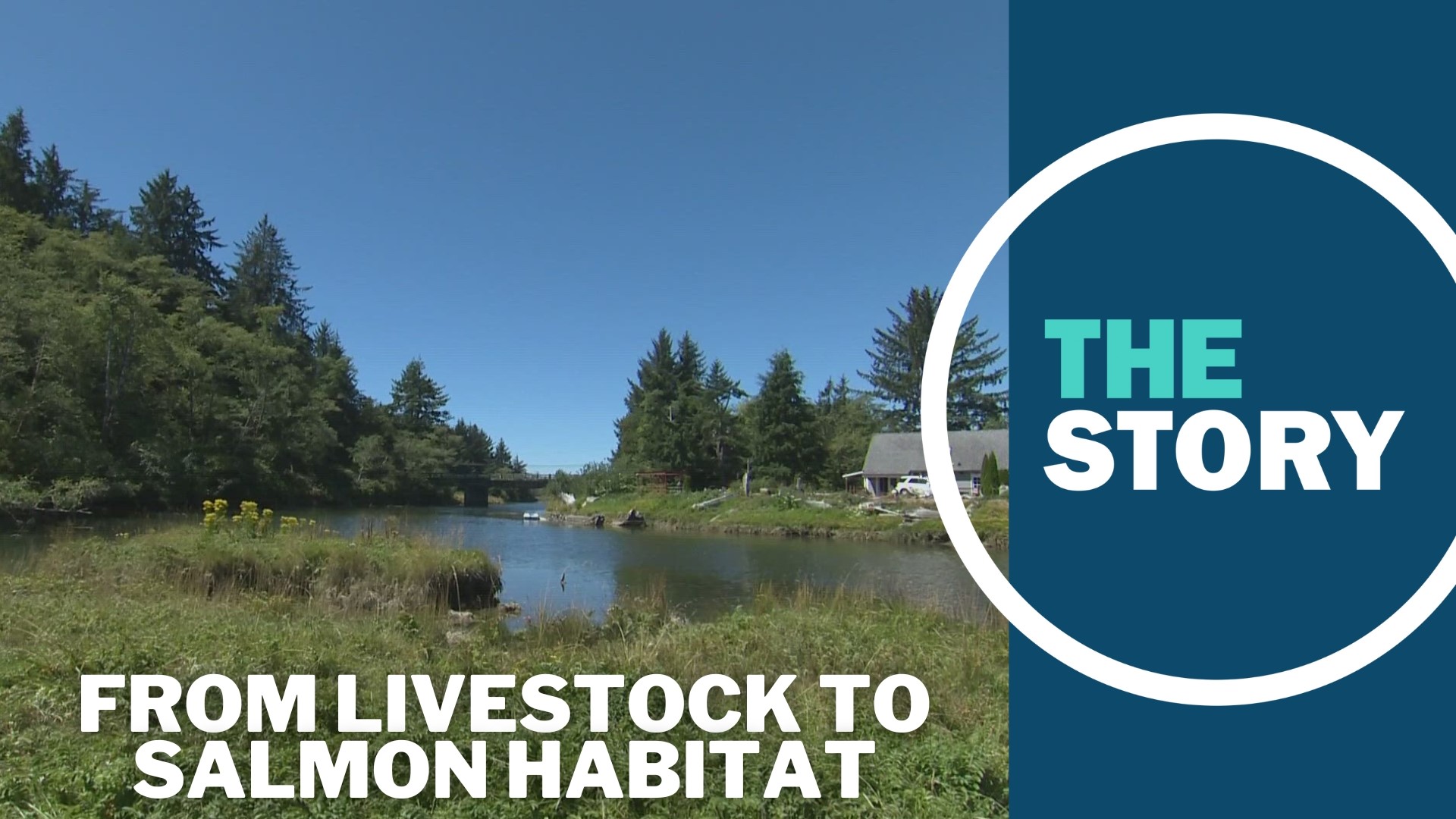LINCOLN CITY, Ore. —
Just south of Lincoln City, near where Drift Creek flows into Siletz Bay, change is afoot.
A 75-acre parcel of land, which has been used for cattle grazing for the last century, will so be returned to its natural state: a tidal floodplain perfect for juvenile salmon.
But it won't happen without a ton of work from U.S. Fish and Wildlife workers who, for the last several weeks, have been using backhoes to tear down levees; removing tide gates that had restricted the flow of the creek and digging out the channels that had been filled in by ranchers.
While this project was not funded by the Inflation Reduction Act, Evan Hayduk, executive director of the MidCoast Watershed Council, one of the groups spearheading the project, said the legislation has put a ton of money in the pipeline that will soon fund this type of habitat restoration.
“It’s a great time to be an executive director of the water council right now because there is funding coming out of every pathway,” he said. “We have a big push to get as many shovel-ready projects as we can ready because it's never been like this. It's not going to be like this. It's a fire hose right now and it's not going to last forever.”
Preparing the project at Drift Creek, which is within the Siletz Bay National Wildlife Refuge, took several years of planning, design and cooperation between nonprofits like Hayduk’s, the federal National Oceanic and Atmospheric Administration, the Oregon Department of Fish and Wildlife and local landowners.
Funding for the project, which totaled under $1 million, came from the Coho Business Plan, which is run by the Wild Salmon Center and aims to bring together local, state and federal entities to work on community-based restoration projects.
The actual work itself involves reversing a lot that humans have done to the land over the last hundred years.
“A lot of these agricultural sites would have dikes built around them and all the existing channels filled in to make a nice clean flat pasture for cattle,” said Kate Iaquinto, who manages the refuge and is overseeing the restoration project.
But clean and flat are not what works best for nature, Hayduk said.
“Since the late 1800s, the Army Corps of Engineers was pulling whole trees and everything out of the estuaries up through the 1980s. State and federal agencies were paying crews with chainsaws because they thought it was fish passage barriers, which we know now is the exact opposite,” he said. “We always say messy equals habitat. If it’s a mess of logs and trees and all kinds of stuff, that’s where fish are using the area and that’s what we’re trying to recreate.”
Once the project is complete, the historic floodplain channels restored and large woody debris placed throughout to create habitat for salmon, the area will become a floodplain, slowly filling with water as the tides come in and providing prime rearing habitat for juvenile salmon.
“Juvenile fish that are reared in areas where there is floodplain that’s naturally flooded actually grow a lot faster because they get more nutrients from the invertebrates and all the things that get washed out of the floodplain and the vegetation and into the water,” Iaquinto said.
Hayduk noted that salmon reared in estuaries like Drift Creek actually grow larger, faster, which can lead to better survival rates in the open ocean. Salmon from estuaries, which make up just 10% of the population, can account for 30 to 40% of fish returning from the ocean to spawn.
But a restored habitat offers a number of other environmental benefits, too, and not just for fish.
“So this is a project that benefits coho salmon, but it also benefits a lot of the birds that use this area, the invertebrates, the whole community will benefit from bringing the habitat back to a more natural state,” Iaquinto said.
And that includes people. When the area was cut off from the natural flooding process, it didn’t get any of the sediment carried by Drift Creek, which meant the land was slowly subsiding. With the floodplain restored, and sediment allowed to once again accumulate, it will provide a buffer against sea level rise, Iaquinto said.
The area will also help with the root cause of sea level rise as well.
“Tidal marshes are very efficient at sequestering carbon,” Iaquinto said. “So just the fact that these habitats exist are really critical to kind of the balance of the natural ecosystem.”
And with a ton of money in the pipeline for just these kinds of projects, Hayduk said they are logical investments, with relatively low initial price tags and long-lasting benefits.
“When we do this investment, we're trying to set it up to restore the processes that are then self-sustaining in the long term,” he said. “We're not having to go back and spend another million in 10 years on these projects. We're having Impact spending a big chunk of money and then letting nature take over and do what it needs to do.”

